January 14th, 2023
9minute read
War is a terrible beast that chews up soldiers and civilians alike.
Total war pushes men to create new and more efficient ways of killing.
But one of the most horrific is the flamethrower, a truly ghastly weapon.
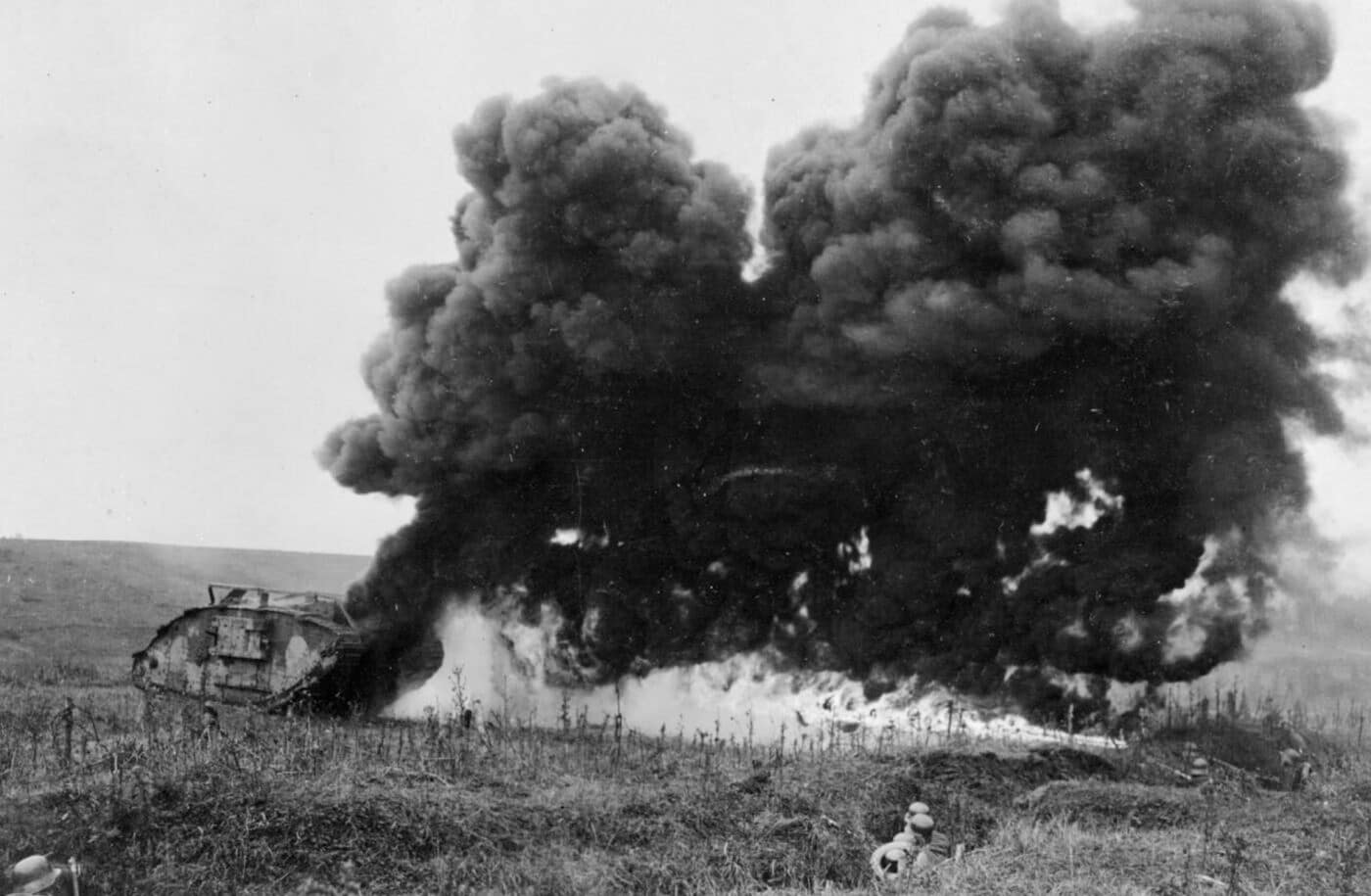
A German flamethrower team engages a British tank at close range near the Somme River in France. Photo: NARA
In World War I, the industrial revolution was turned loose on the battlefield.
In a land of mechanized death, the flamethrower could push battle-hardened troops into genuine terror.
The German army used this to its advantage and worked diligently to build and improve its flammenwerfer program.
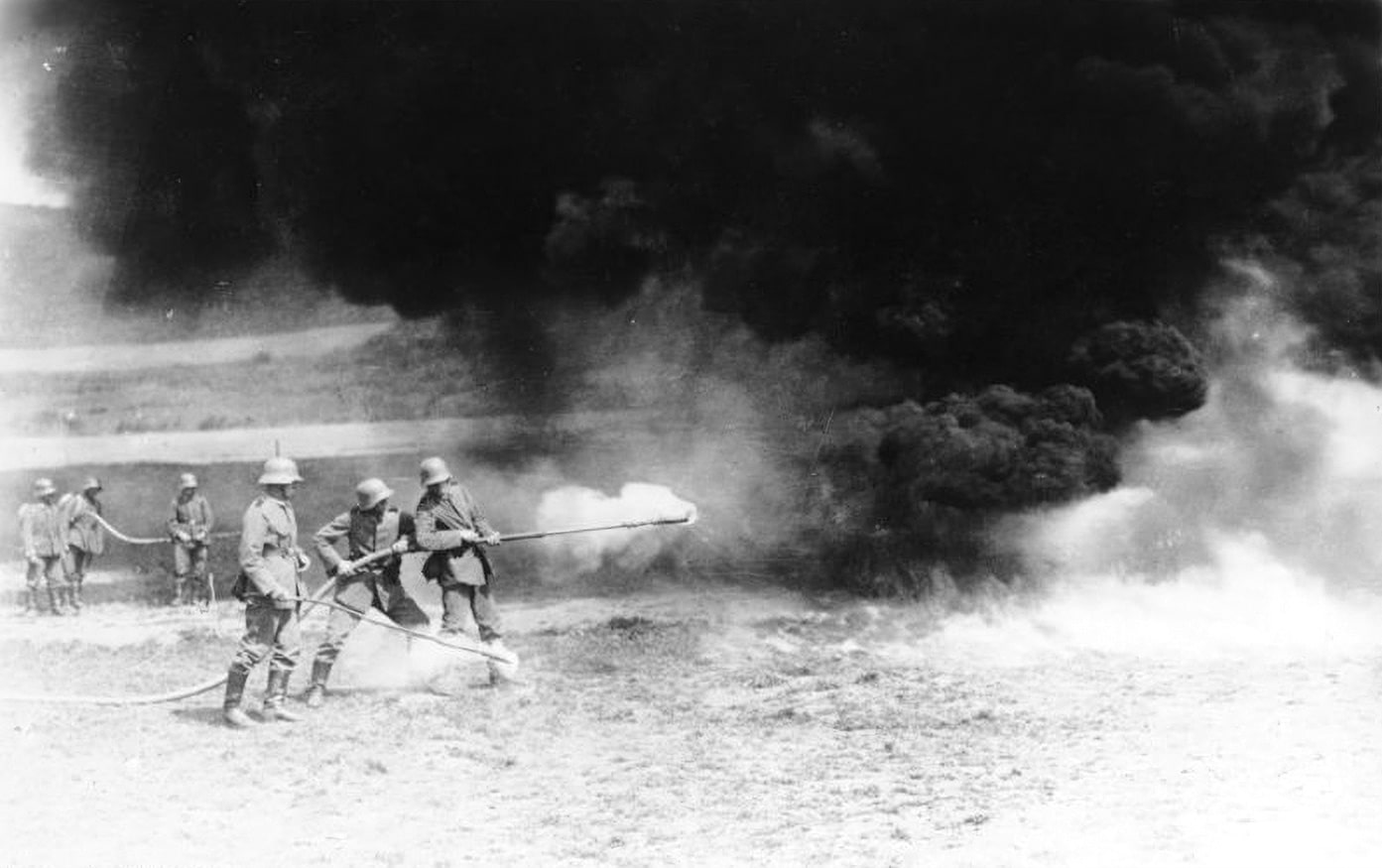
German troops practice using Grof flamethrowers in 1917. Grossflamenwerfer designs were not designed for mobility. Photo: NARA
Origins of Weaponized Fire
Fire is not a modern weapon.
For more than 2,000 years, men have used fire on the battlefield to influence the outcome of wars.
Ancient Chinese, Greek and Arabic warriors all used flame in some form or another.
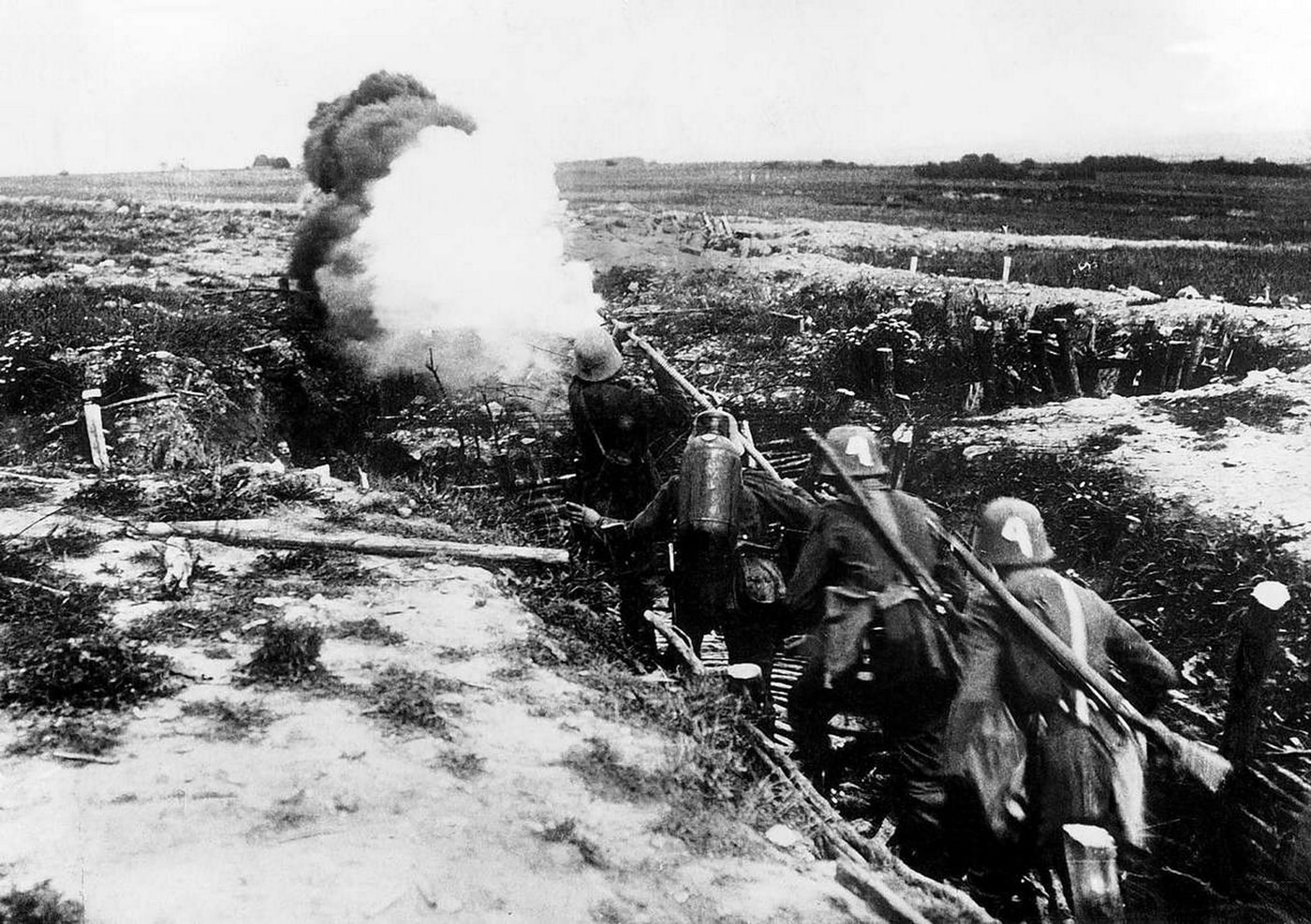
German troops simulate an attack led by a flamethrower team. The flamethrower shown is a Kleif-type carried by the second man while the lance operator fires over his own shoulder. Photo: NARA
The Roman and Byzantine use of so-called Greek Fire in naval battles is the stuff of legend.
Both the Chinese and Arabs developed crude projectors that would dispense flammable oil through a variety of pumping mechanisms.
Flammenwerfer: The German Flamethrower
The term flamethrower derives from the German term flammenwerfer.
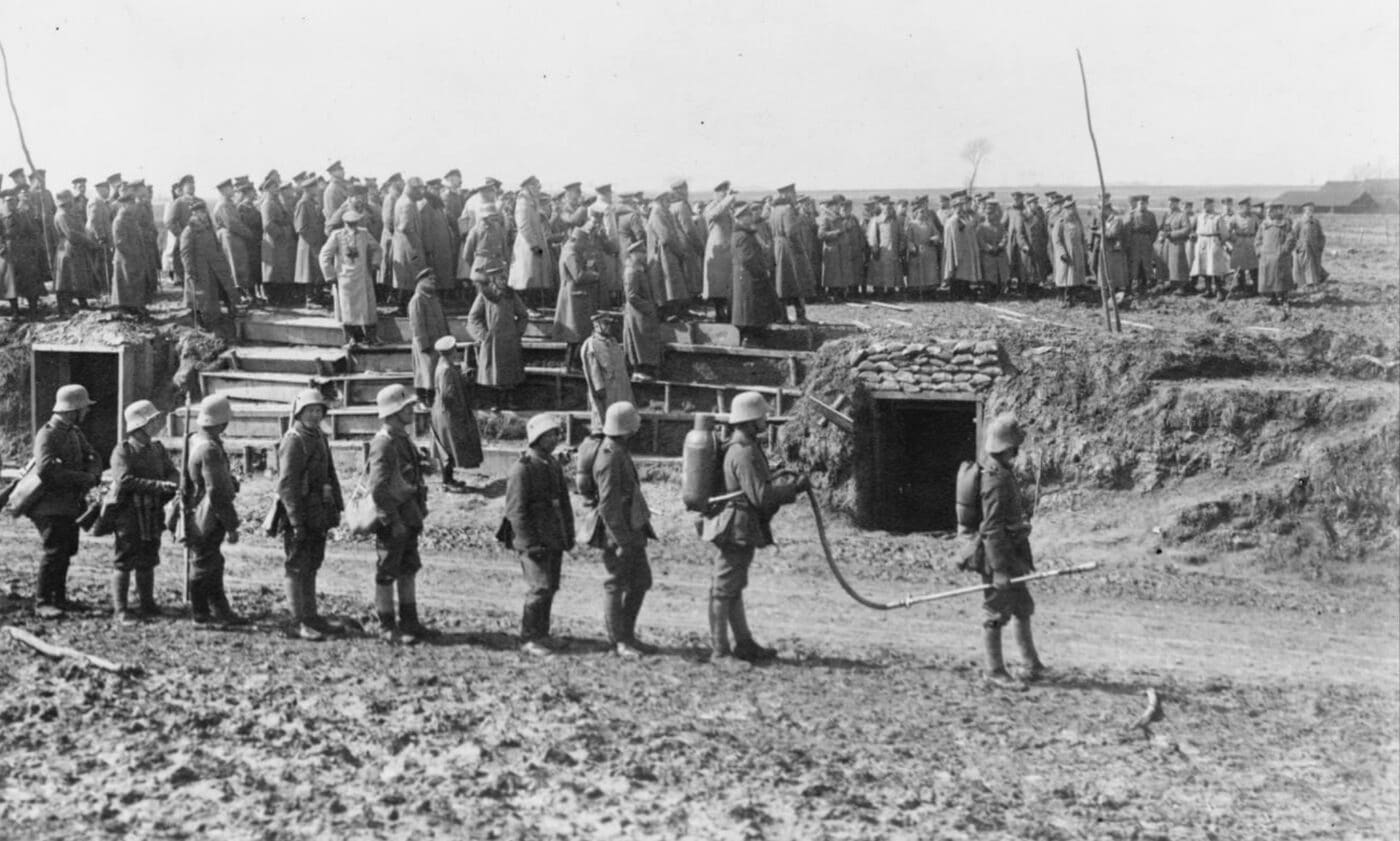
A German flamethrower team prepares to lead a simulated attack for German officers. They are using a Kleif-style flammenwerfer. Photo: NARA
What we know of as the modern flamethrower first came to prominence in World War I.
One has but to look.
Being able to read German helps.
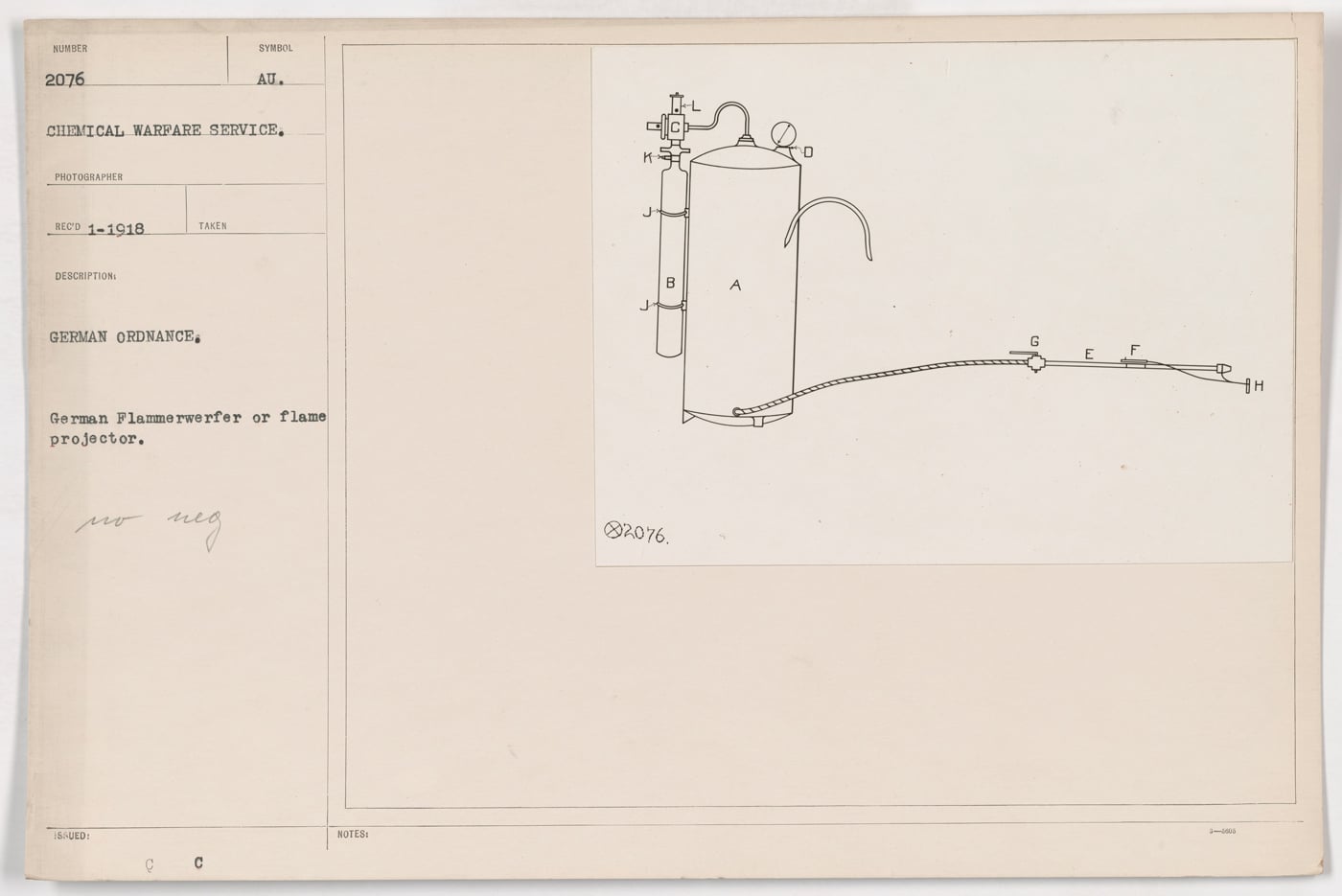
A January 1918 U.S. engineering drawing of a German flamethrower. The design is simple yet horrific in effect. Photo: NARA
During the same year, the German army funded his continued work on flamethrower designs.
Based on the feedback he received, two versions of the flammenwerfer were delivered to the army in 1908.
Reddeman was an officer in a German Pioneer battalion until 1903.
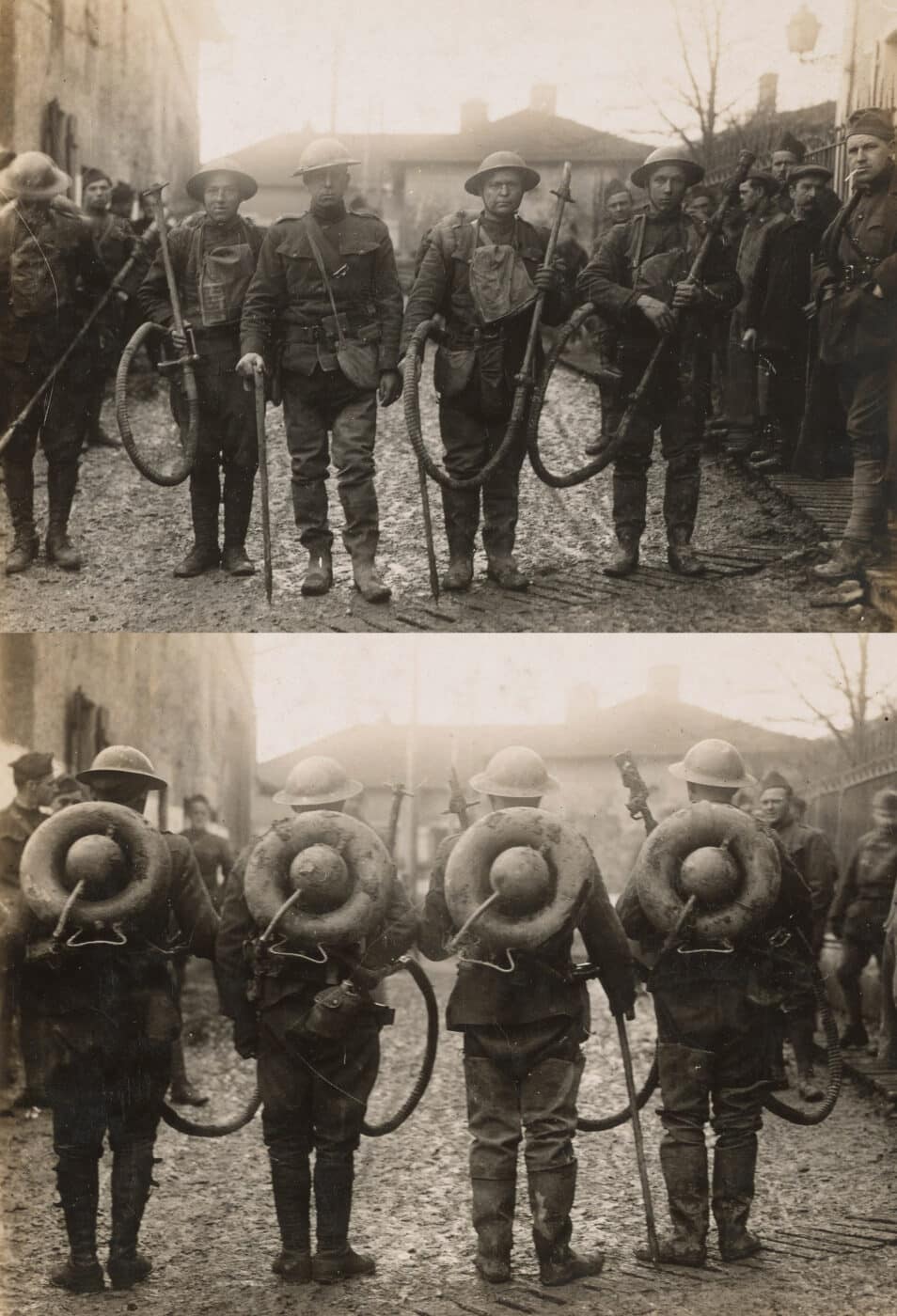
Also known as “liquid fire equipment,” these Wex-type flamethrowers were captured by American soldiers during a raid on March 6, 1918, near Menil-la-Tour, France. Photo: NARA
At that time, he transitioned to a reserve officer and stayed in a Pioneer unit.
Pioneers were specialist troops frequently responsible for the demolition of fortifications, engineering strong points and using specialized weapons.
In civilian life, Reddeman was a fire chief with law and engineering degrees.
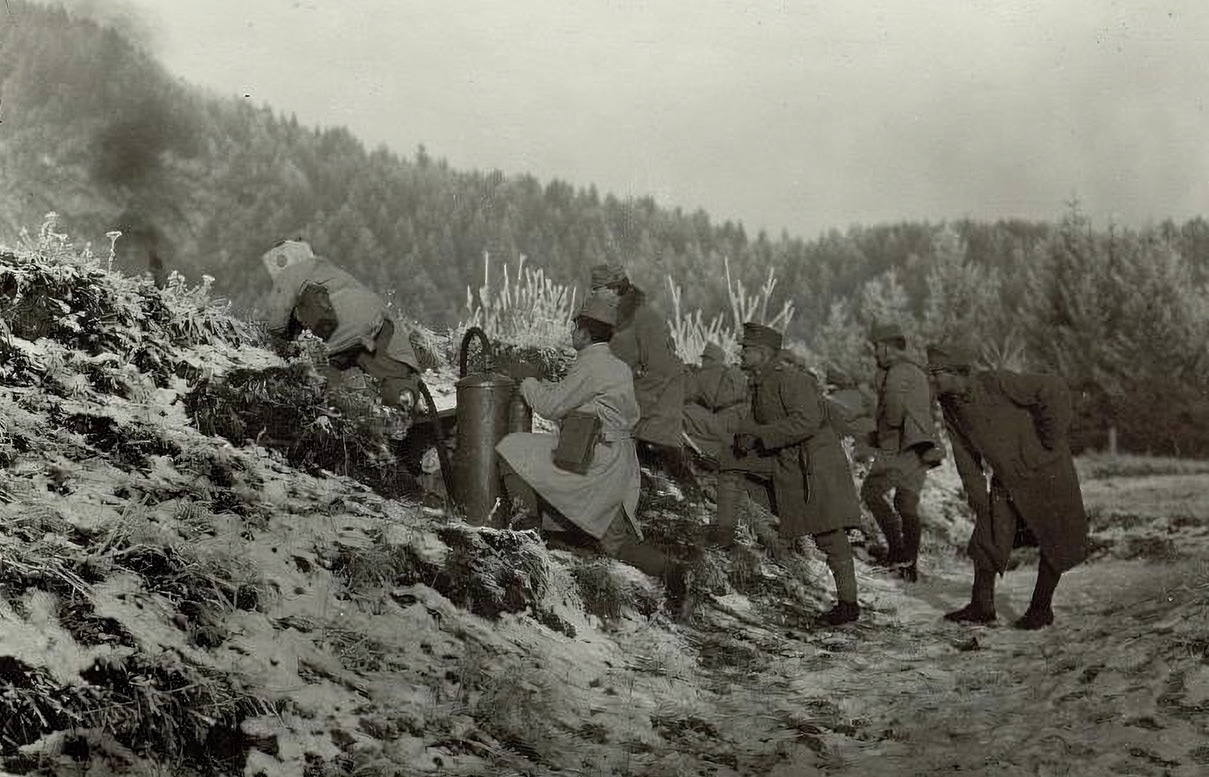
Flamethrower troops demonstrated the use of the weapons for general officers in 1915. Photo: NARA
He was intrigued by the use of kerosene as a weapon in the Russo-Japanese War of 1904-1905.
Using firefighting pumping equipment, he experimented with various petroleum blends to find a mixture that would work.
Once the war started, Reddemann returned to active duty.
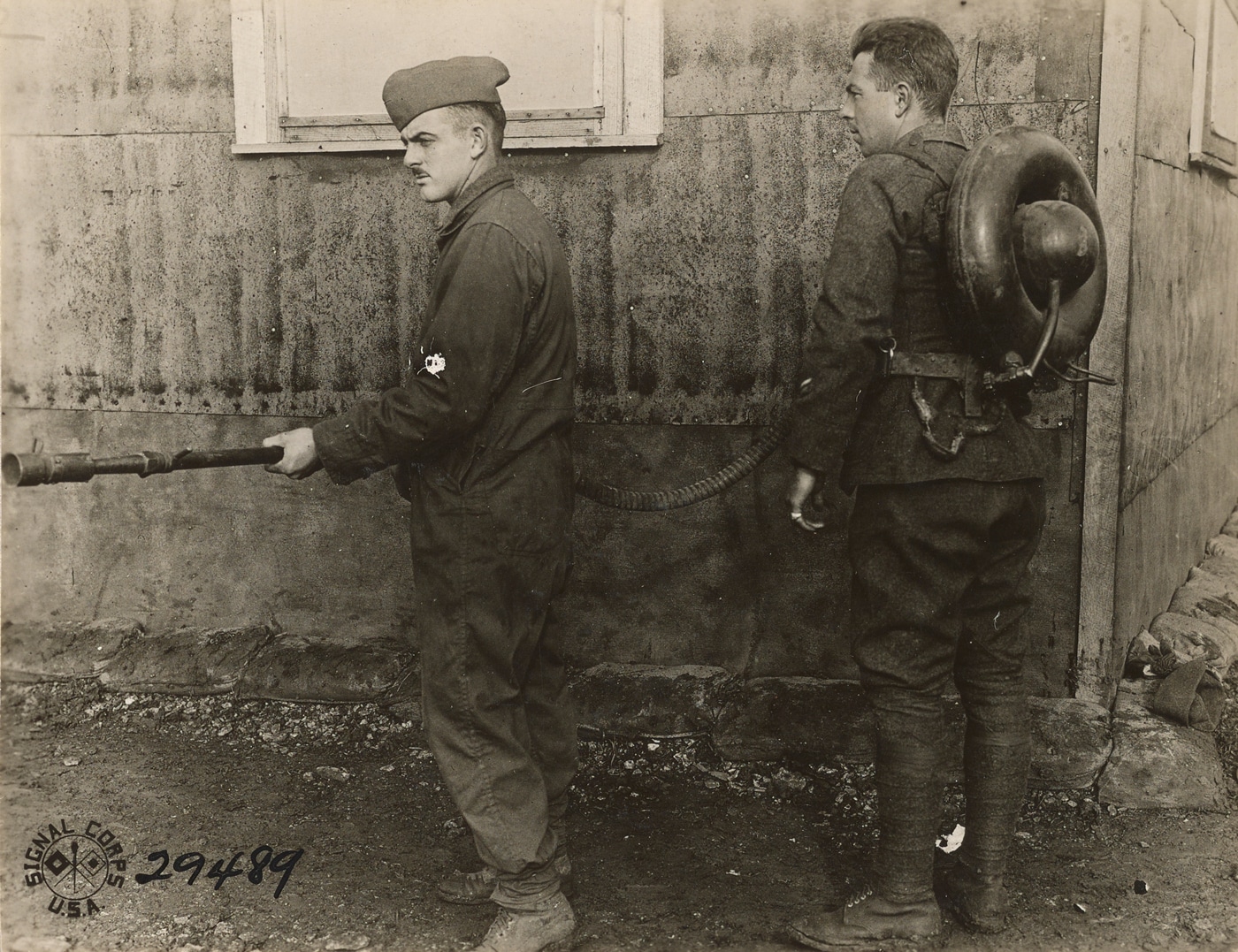
U.S. soldiers test a captured German Wex flammenwerfer near Marne, France on October 16, 1918. Photo: NARA
By the second year of the war, he headed a battalion of flamethrower Pioneers.
Based on their successes, a flammenwerfer regiment was raised under Reddemanns command.
Both went through a number of evolutionary changes, frequently based on the feedback from Reddemanns Pioneers.
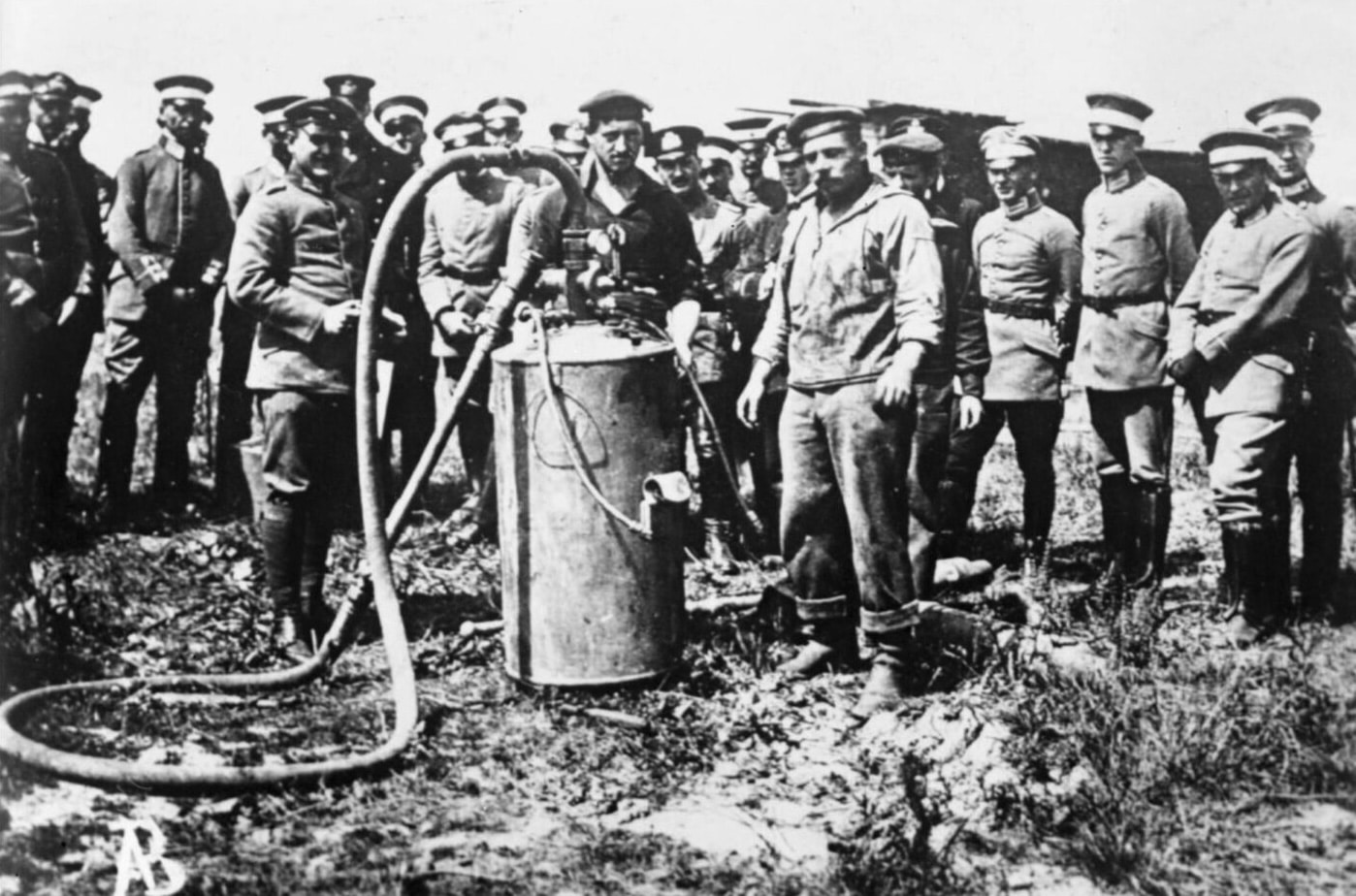
German Marines operating a Grof-type liquid fire apparatus during a presentation for army officers. Photo: IWM
A third German flamethrower was the Wechselapparat.
It was introduced later in the war and was more portable.
It was not a Fiedler design.
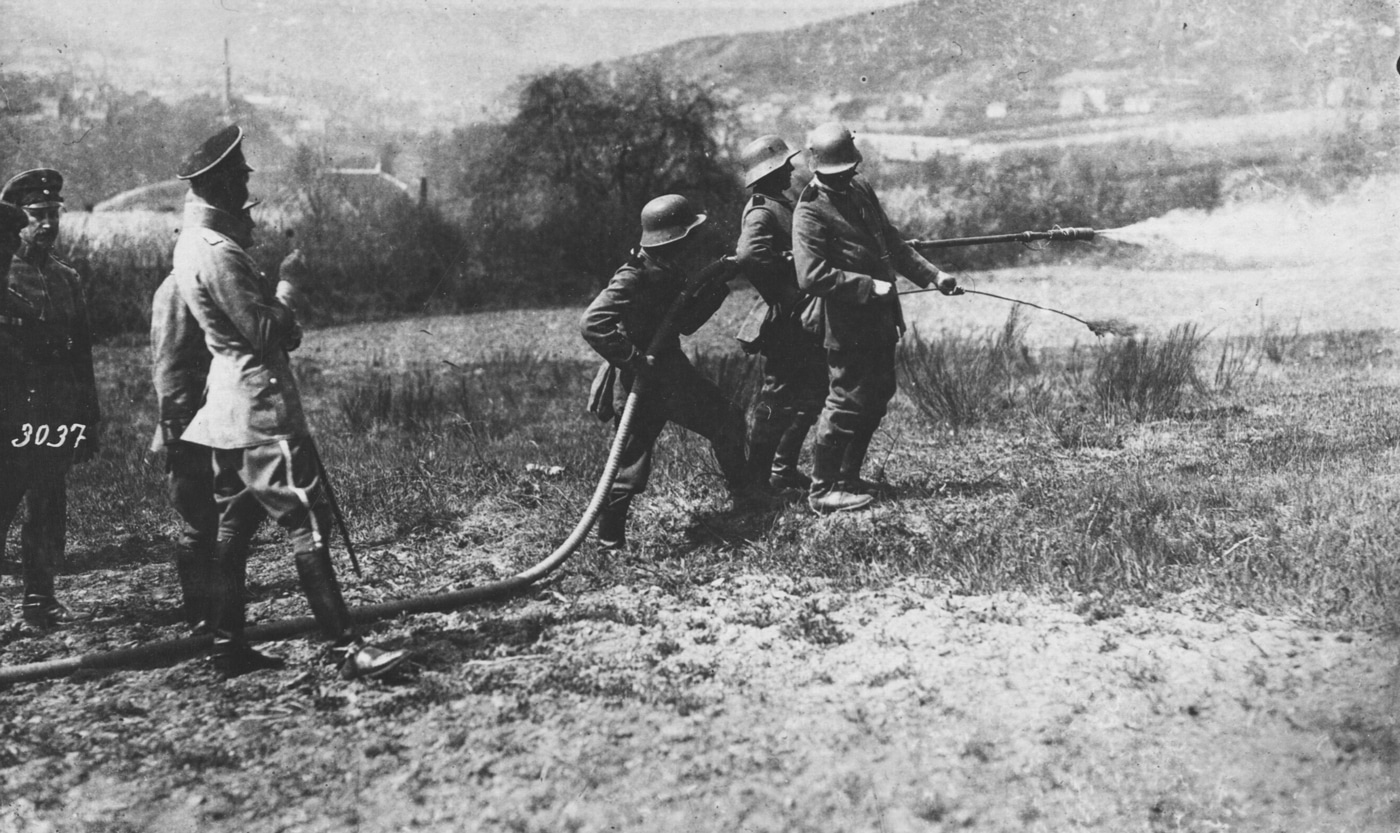
Crown Prince Wilhelm, the eldest son of Kaiser Wilhelm II, observes a flamethrower demonstration in May 1917. Crown Prince Wilhelm was a major supporter of flammenwerfer units. Photo: NARA
Several additional designs were undoubtedly attempted.
Ive not found any documentation of their use save one: the Schlayer Sprayer.
Unlike the other flamethrowers that used heavier petroleum mixes, the Schlayer used gasoline.
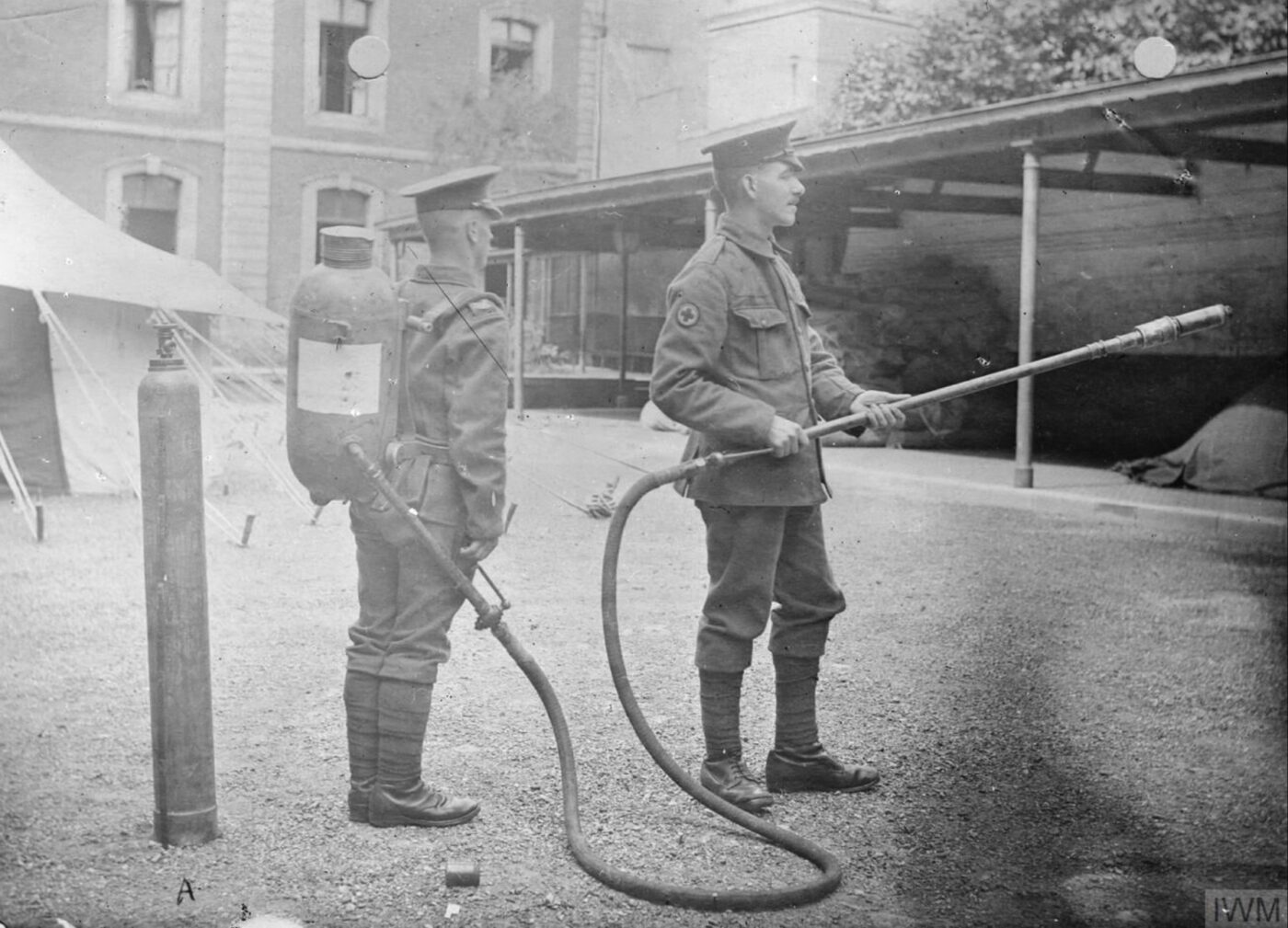
Two British soldiers demonstrate the use of a Kleif-type flamethrower. Portable flammenwerfer units were designed to work with teams of two or more people. Photo: IWM
Grossflammenwerfer
The largest German flamethrower of the war was the Fiedler-designed Grossflamenwerfer.
Instead, the Grof had a long hose connected to stationary fuel and propellant canisters.
The soldiers would attack from their trenches using the hose for mobility.
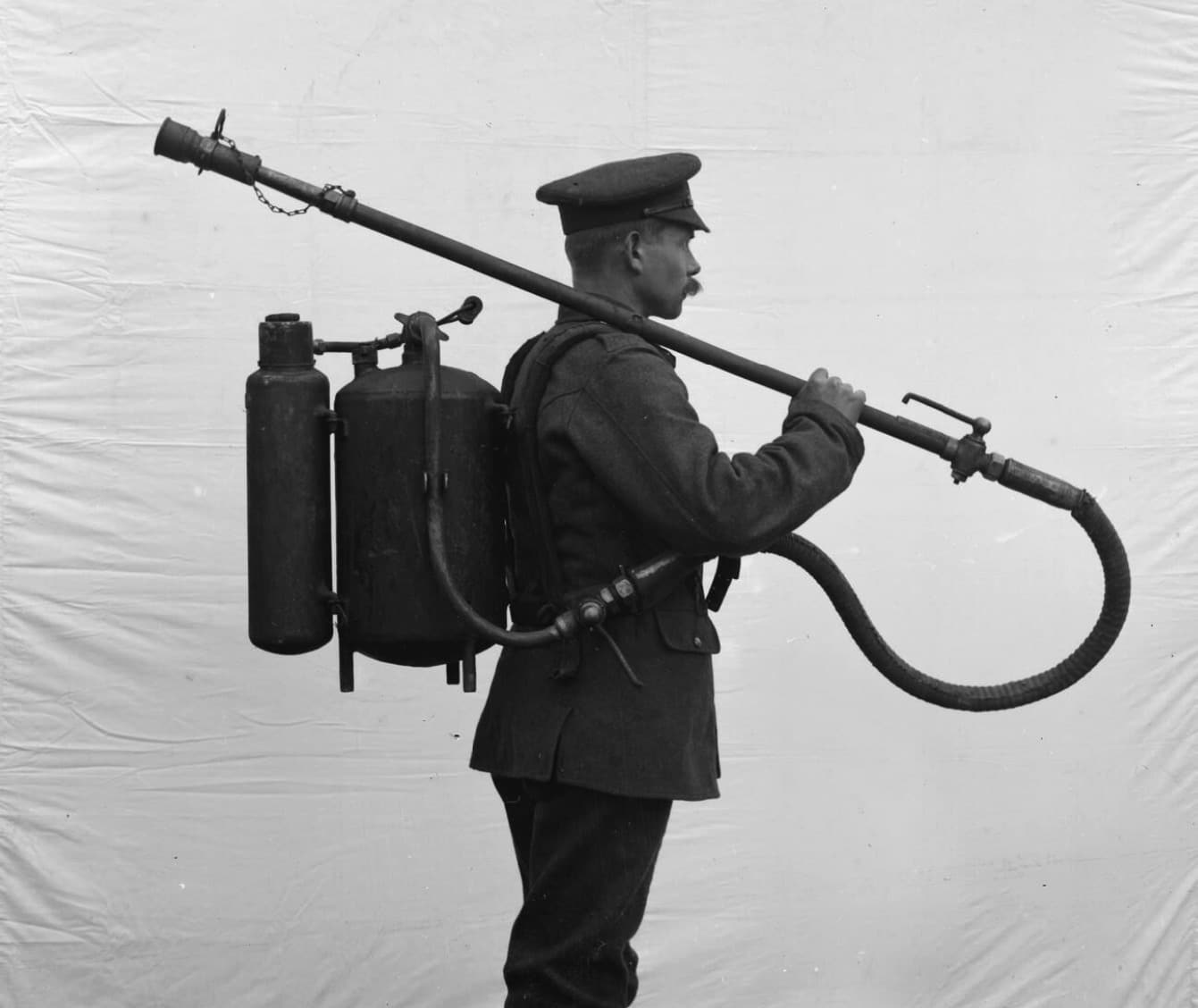
A British soldier demonstrates a Kleif M.1915 (late model) flammenwerfer. Photo: IWM
Ironically, this is similar to how many firefighters use water lines to attack and extinguish a fire.
Since the Grof was not intended to be portable, it was not hindered by weight and size restrictions.
Consequently, the Grof M.1912 could spray fire for about 40-50 continuous seconds up to 40 yards.
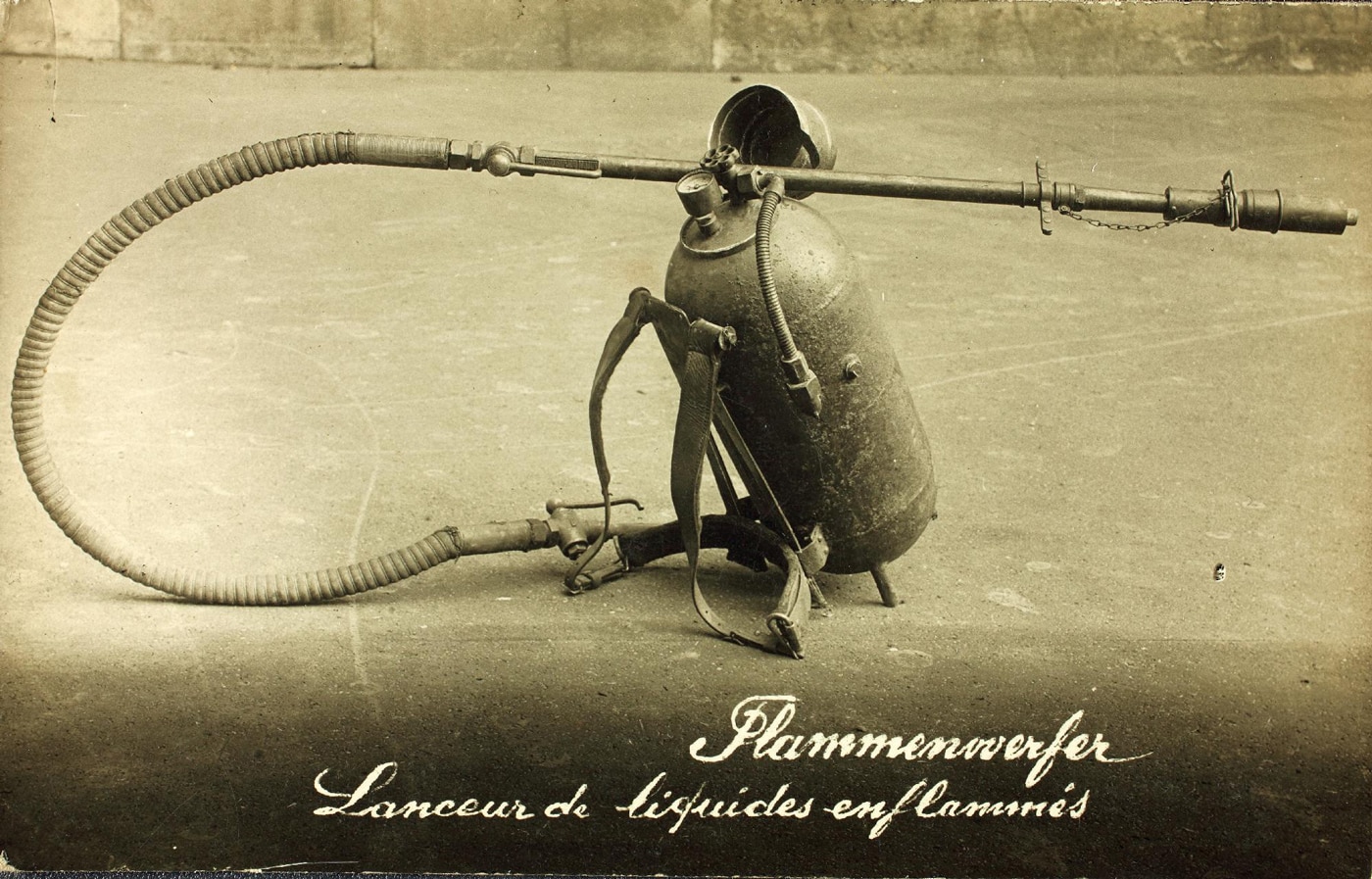
This is a close look of a German flamethrower captured on a real photo postcard. Photo: San Diego Air and Space Museum Archive
The M.1916 version allowed the operators to connect multiple tanks and hoses to provide additional tactical options.
Grofs were typically operated by a team of five men and were used in stationary attacks.
Stationary attacks were possible as many of the enemy trenches were very close to the German lines.
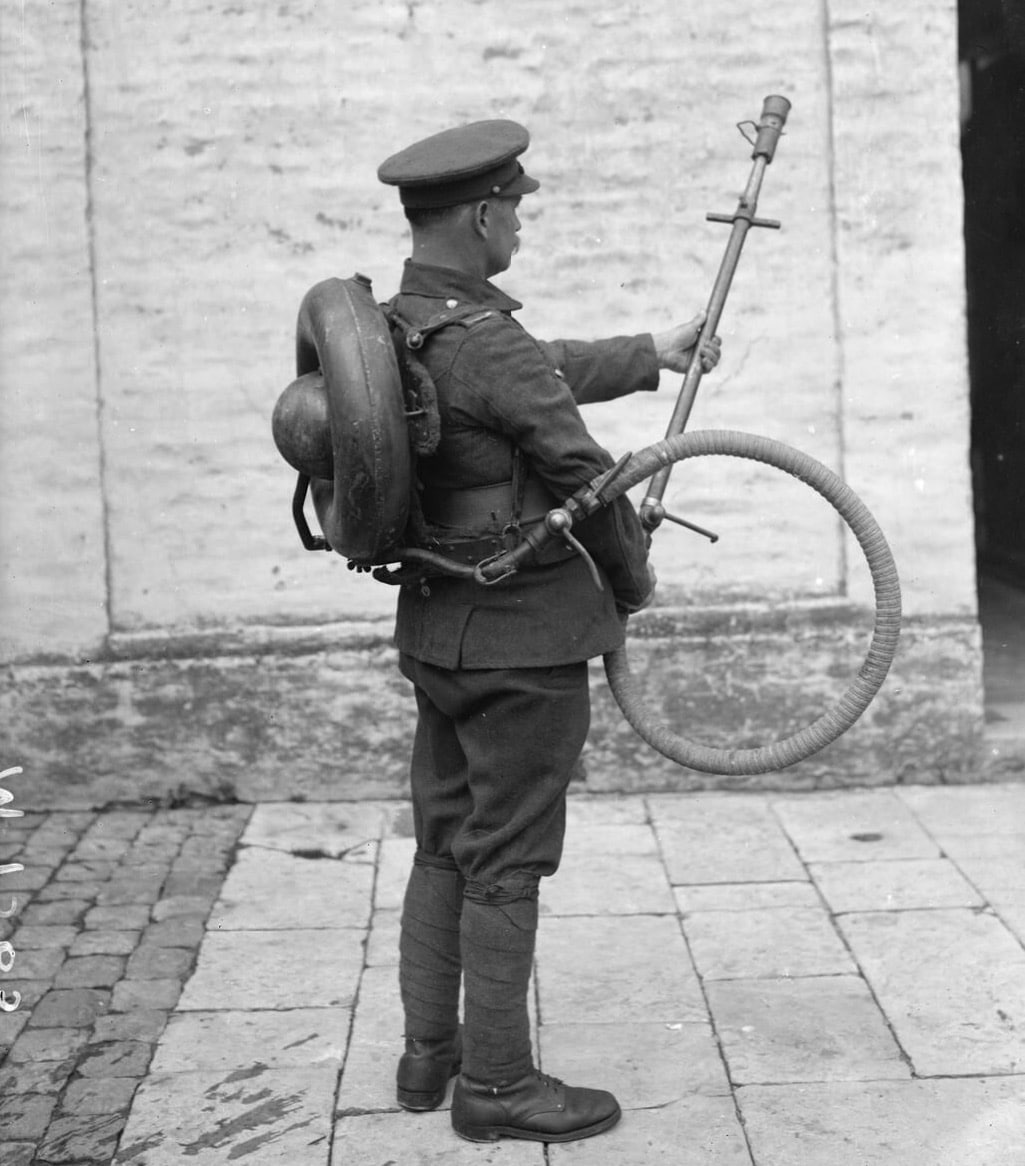
A British soldier demonstrates a captured Wex-style flammenwerfer that had been captured on the Western Front. Photo: IWM
Kleinflammenwerfer
The Kleinflammenwerfer was a man-portable flamethrower developed by Fiedler.
It is also called the klein Flammenwerfer or Kleif.
Although portable, these were not one-man devices.
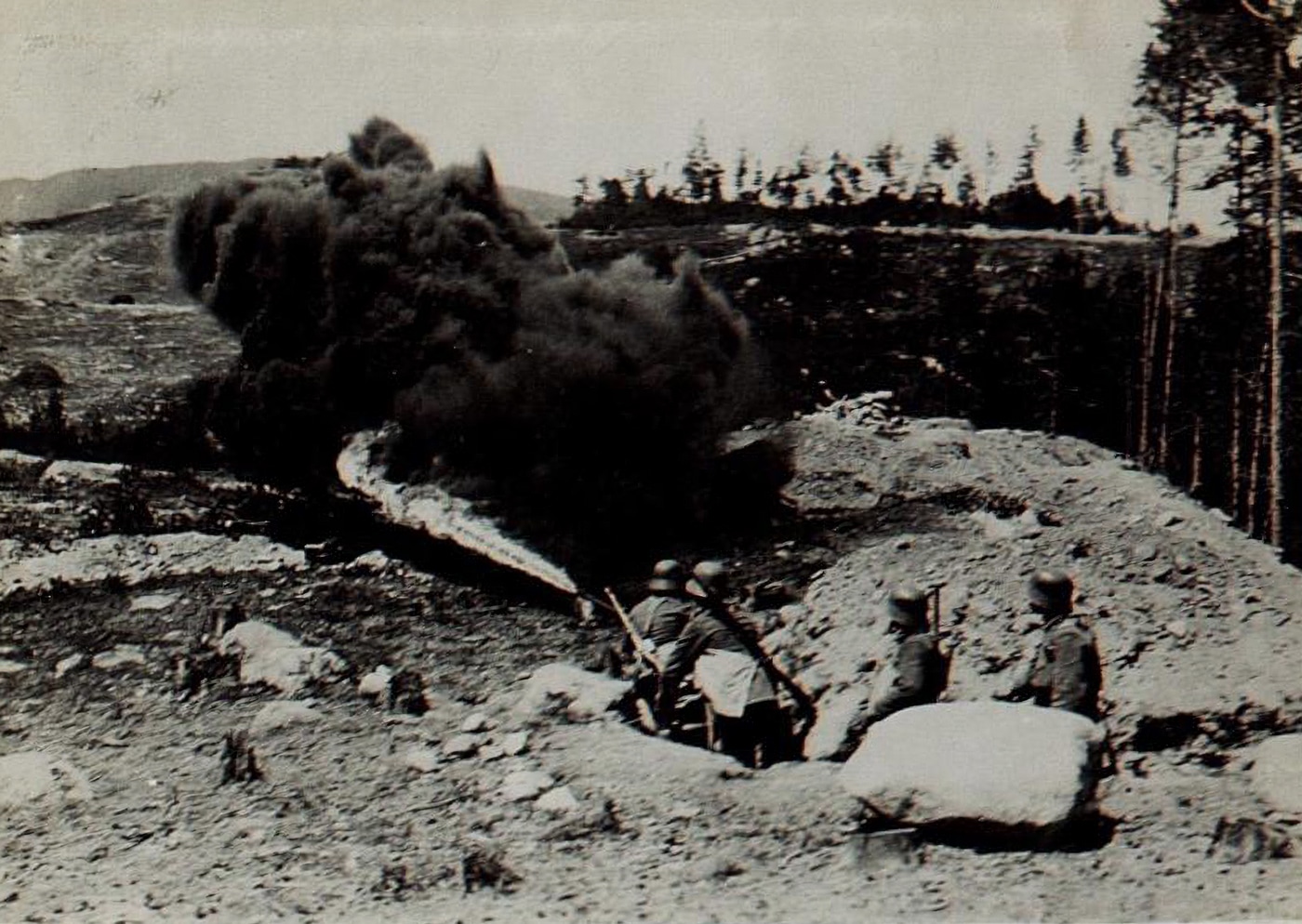
German troops practice attacking a trench system with a flamethrower team in 1915. Photo: NARA
Kleifs were used in teams typically four-man squads.
One man with an assistant carried the tank while another man operated the lance (nozzle).
Wechselapparat
Wechselapparat, or Wex, flamethrowers were introduced to the field in 1917.
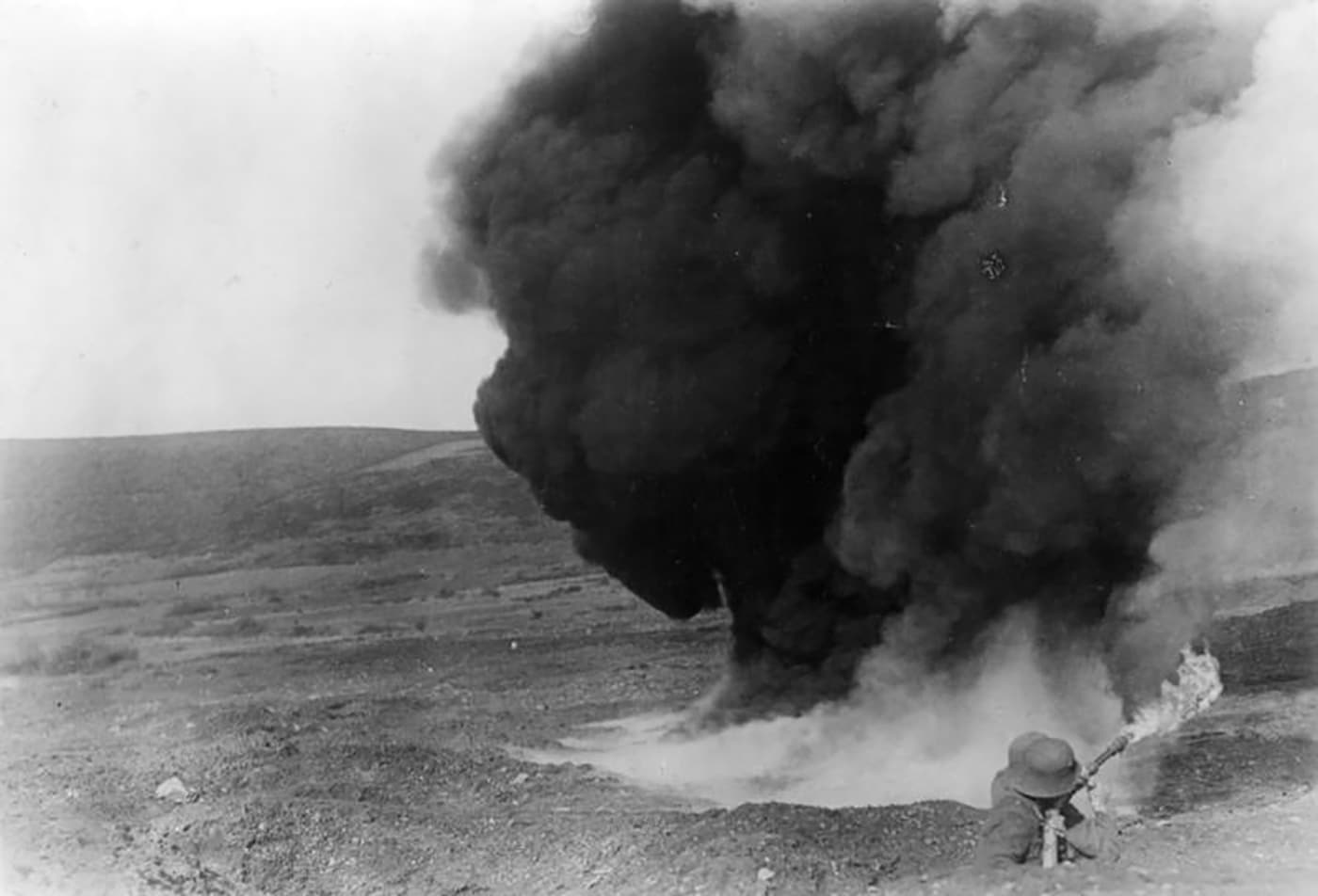
German troops launch a flamethrower attack from a forward trench in 1918. Which battle this was is unknown. Photo: NARA
These units had a distinctive circular backpack-style tank system.
As with the Kleif, the Wex was operated by a four-man team.
However, the truth seems to be quite the opposite.
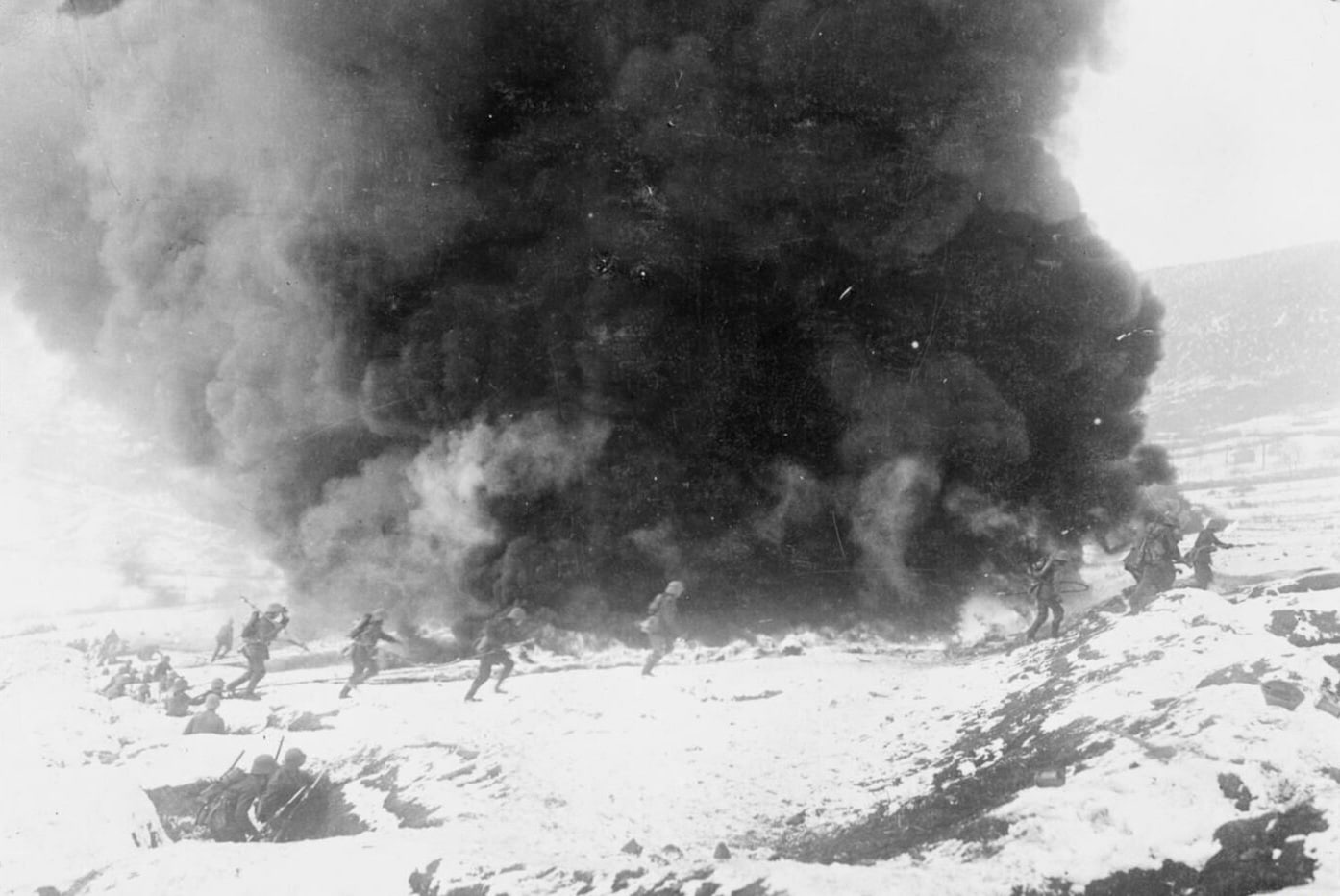
German flammenwerfer units practice pouncing attack tactics near the Western Front. Four Wex-type flammenwerfers can be seen carried by the troops on the move. Photo: NARA
Allied writings and dispatches of the time suggest that German flamethrower attacks were frequently successful.
As a result, many of the Allied nations began their own development of flamethrowers.
This included a high degree of success against hardened positions and Allied tanks.
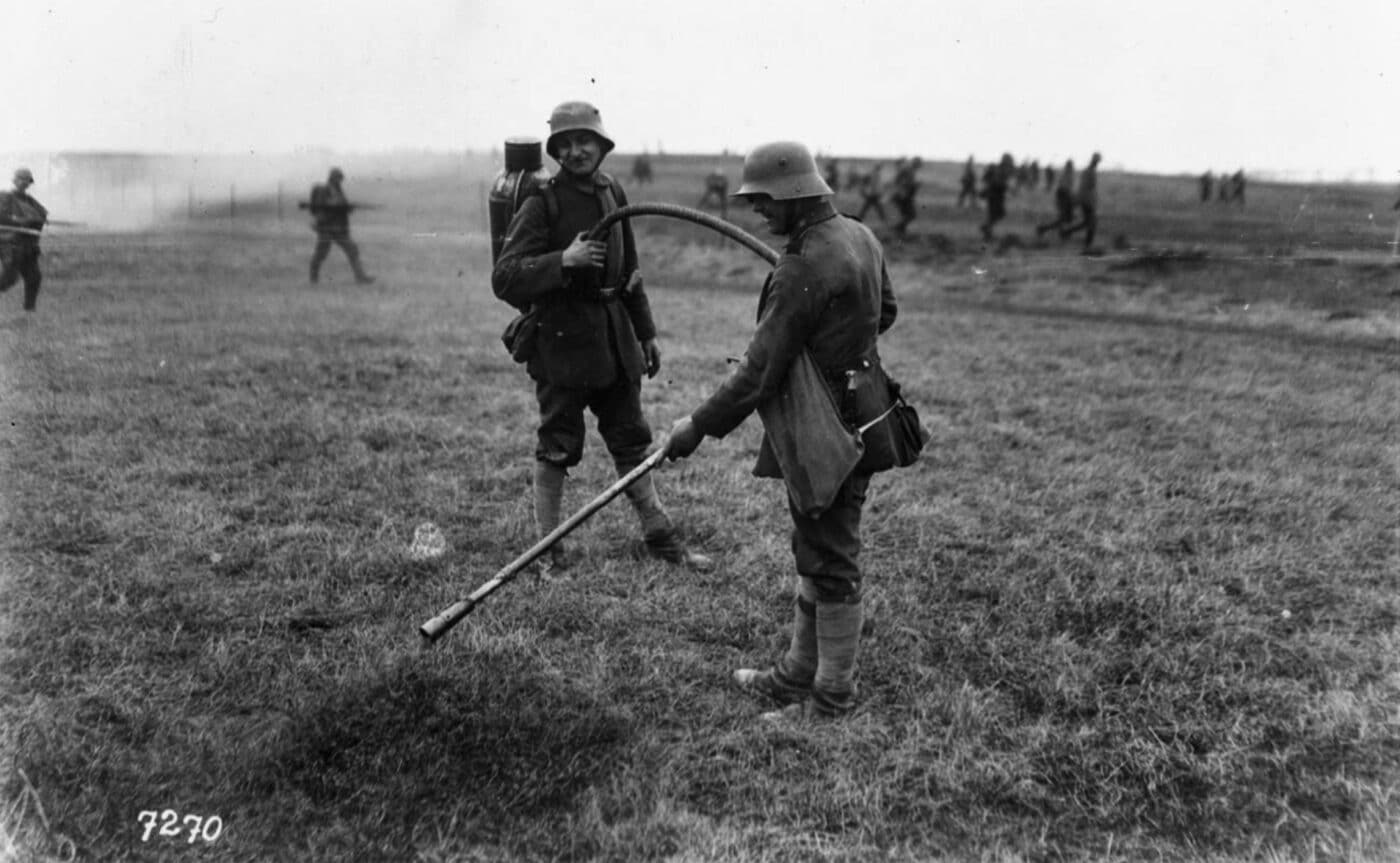
German Pioneers practice with a Kleif flamethrower at a training school in 1917. Most German flammenwerfer troops were highly trained in assault tactics. Photo: IWM
A large part of the German flamethrower success came from the use of the team tactics the Pioneers developed.
These units tested and refined various attack methods that proved quite formidable.
These early uses were often unsuccessful and the equipment proved troublesome.
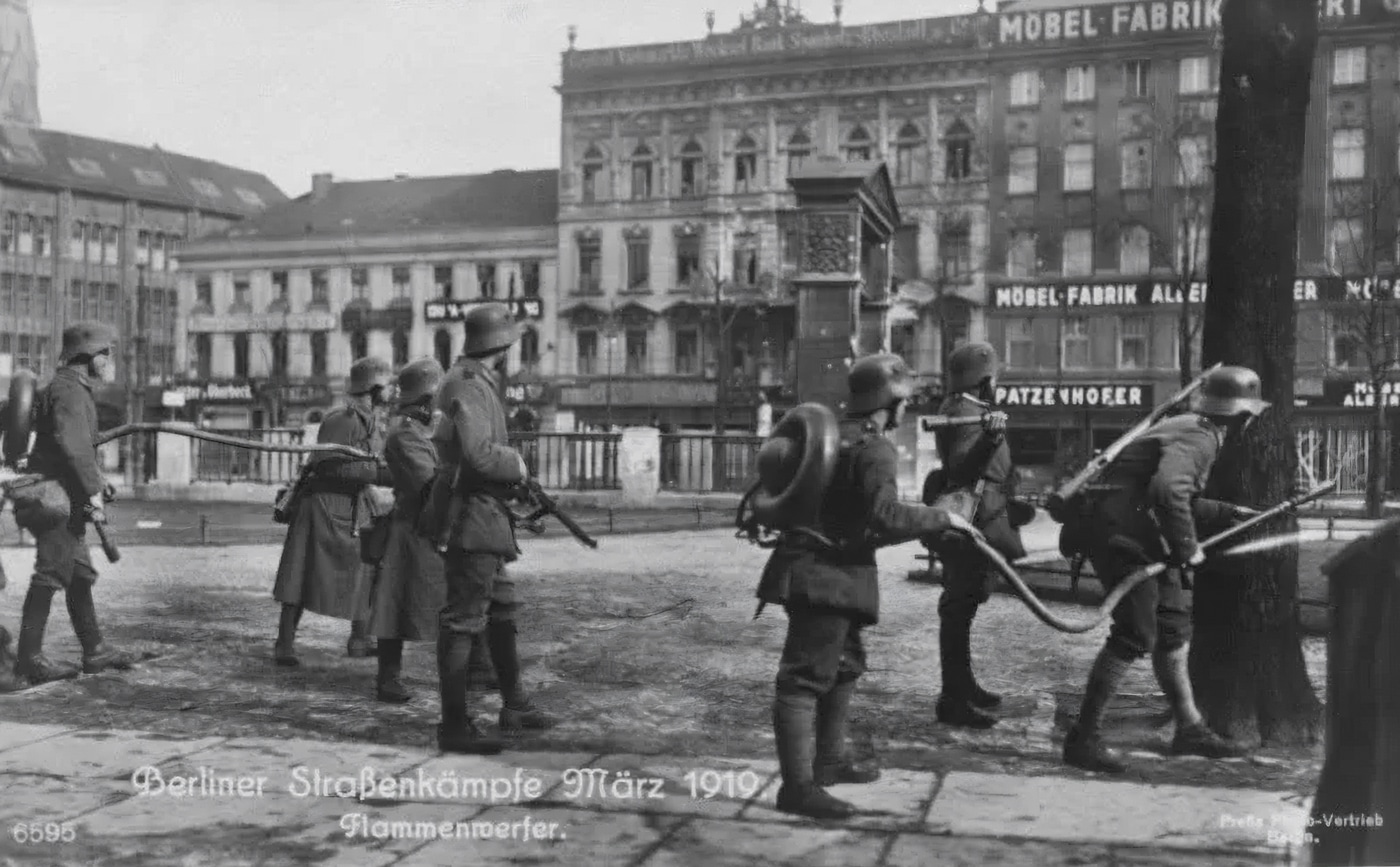
After the Great War, German troops used flamethrowers and grenades in street fighting against communist revolutionaries in March 1919. Photo: NARA
Wictor does an exceptional job of documenting the development of the equipment and tactics used by the units.
The breadth of information Wictor documented is breathtaking.
It is an excellent start to anyones investigation into the modern flamethrower.
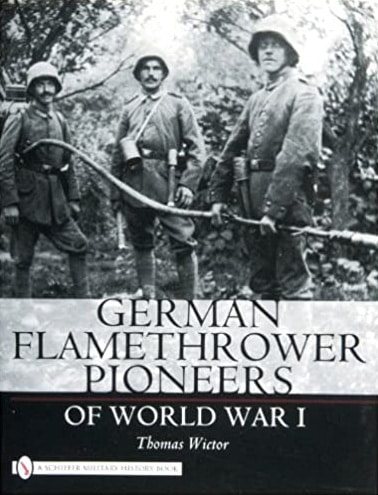
Go to forum thread




